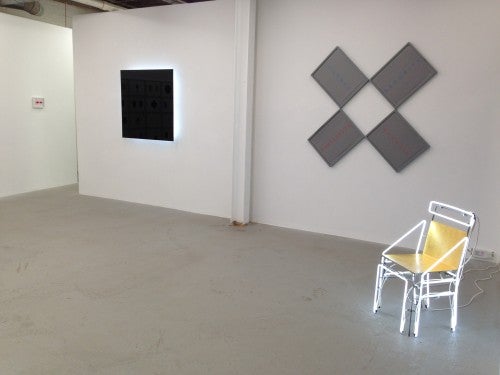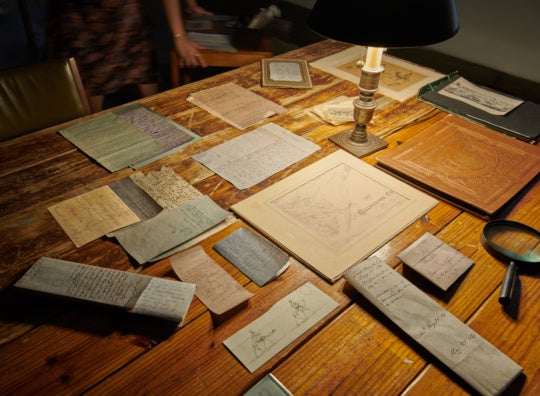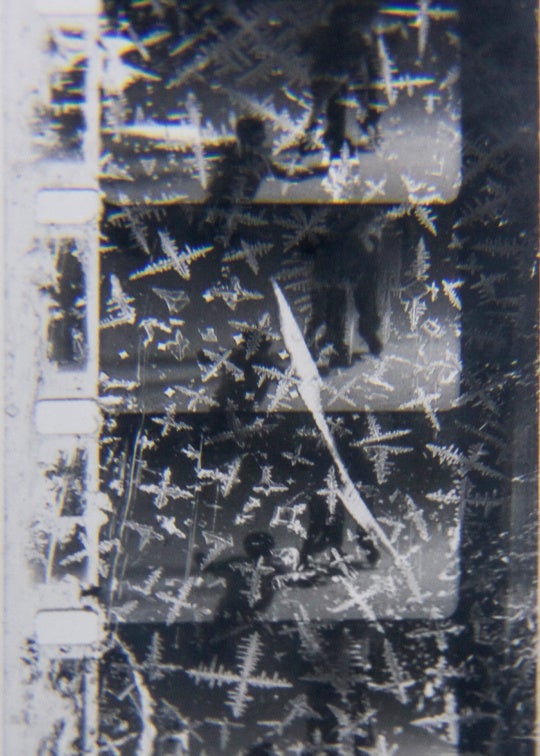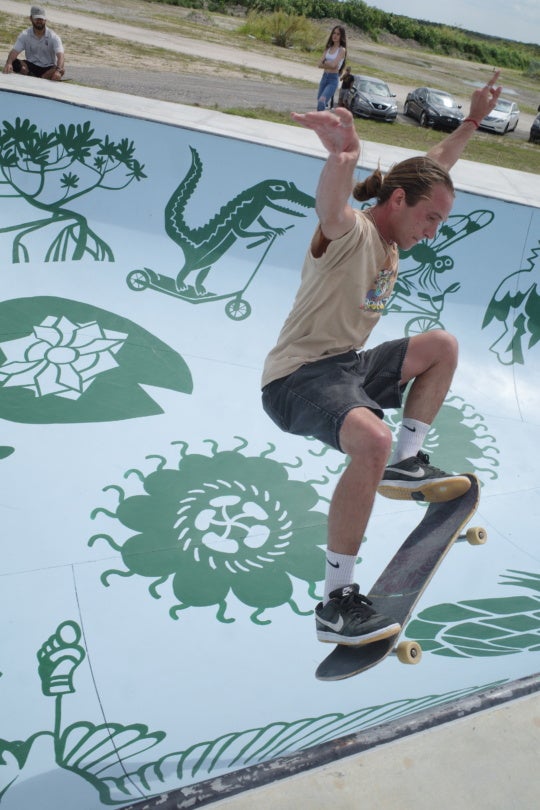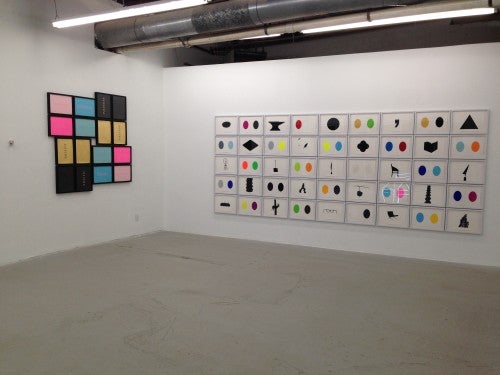
The paintings and sculptures in Rusty Wallace’s second solo show at Twin Kittens are spare but allusive. His meticulous works are organized around dialogues between opposing concepts and an ongoing conversation with art history itself.
Of the text-based works, the strongest is the smallest: Comma (Breath), 2012, a bare punctuation mark that slyly hooks your eye. Linguistically, a comma is a pause where syntactic connections are made, and Wallace aims to generate these suspended moments of connection using a minimal visual grammar.
This is exemplified in the titular work, Dialogue (2008-2011), a grid of gouaches on paper dominating most of one wall. The pieces alternate between pairs of colored ovals and black silhouettes of recognizable artworks, Duchamp’s bicycle wheel, Mies’s Barcelona chair, Brancusi’s Endless Column and Bird in Space among them. The work feels like a puzzle. The silhouetted images are pointers to whole networks of conceptual and historical associations, but their formal placement within the grid can only hint at how they should be assembled. Ideally, a dialogue is an orderly give and take, but here these associations drown each other out. In terms of Wallace’s favored oppositions, intuitive thinking tramples the tidy paths of logic.
The 2010 sculpture Light (Homage to J. Beuys) is the show’s centerpiece, an alchemical transmutation, or perhaps transubstantiation, of Beuys’s Fat Chair (1964). Wallace replaces Beuys’s earthy wood and fat with curved steel and gold leaf, outlined in white neon. It evokes any number of shopworn dualisms: flesh and spirit, or Platonic forms and their instances. But the work rises serenely above these oppositions. It’s a lovely and clever affirmation that artworks, too, go to heaven.
“Dialogue | Rusty Wallace” is on view at Twin Kittens through January 9.
Dan Weiskopf is an associate professor of philosophy and an associate faculty member in the Neuroscience Institute at Georgia StateUniversity. He is the author, with Fred Adams, of An Introduction to the Philosophy of Psychology, forthcoming from Cambridge University Press.
